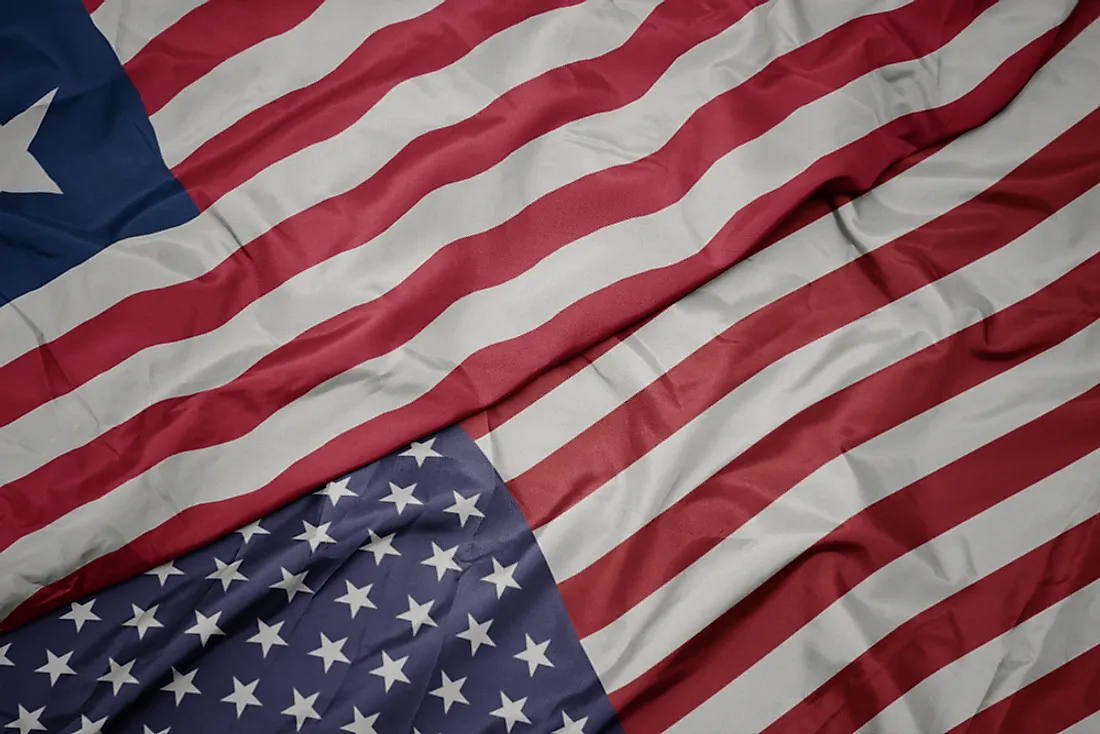
Does Antarctica Have Its Own Flag?
Antarctica, Earth’s southernmost continent, lies almost entirely within the Antarctic Circle and is surrounded by the Southern Ocean. Covering about 5.4 million square miles (14 million square kilometers), it is the fifth-largest continent. Despite its vast size, Antarctica has no permanent human population because of its extreme cold and desert-like conditions. Instead, dozens of nations maintain seasonal and year-round research stations, staffed by about 1,000 people in winter and up to 5,000 in summer. Although the continent has no official flag, various designs have been proposed over the years to represent international cooperation in this unique region governed by the Antarctic Treaty System, which came into force in 1961.
Governance
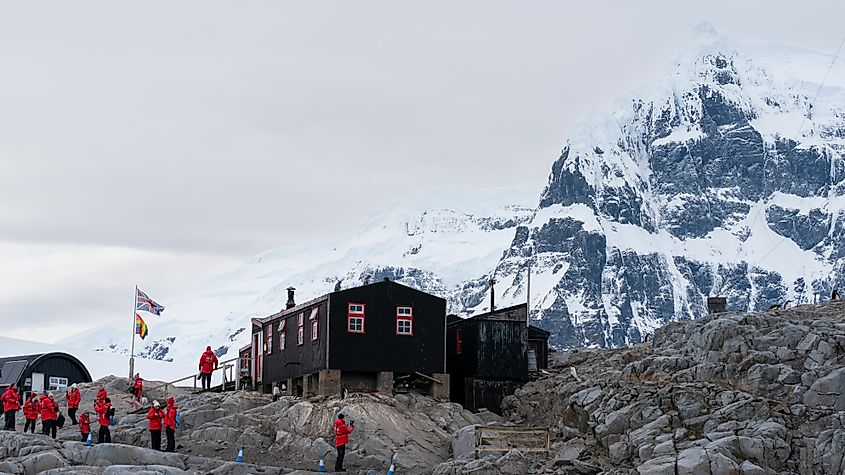
To understand why there is no official flag of Antarctica, it helps to first grasp how the continent is governed. Rather than belonging to any one country, Antarctica is administered under the Antarctic Treaty System, an international agreement signed in 1959 and entering into force in 1961. The treaty set aside the continent for peaceful and scientific purposes only, prohibiting military activity, nuclear testing, and mineral resource exploitation.
While seven nations maintain territorial claims—including the United Kingdom, Chile, and Australia—those claims are held in abeyance under the treaty, meaning no new claims can be made or enforced. Instead, member countries cooperate through shared research programs and joint facilities, often flying their national flags side by side at research stations to symbolize international collaboration rather than sovereignty.
Flag Proposals
Early Flag Proposal by Whitney Smith

Before Graham Bartram’s blue-and-white design gained recognition, an earlier proposal came from Whitney Smith, an American vexillologist and one of the founders of modern flag studies. In the 1970s, Smith created an orange rectangular flag featuring three white symbols arranged vertically near the hoist. At the top sits the letter “A,” standing for Antarctica. Below it is a semi-circle or bowl shape, symbolizing the continent’s position in the Southern Hemisphere, and beneath that are two hands cradling the semi-circle, representing peaceful human cooperation and stewardship.
The orange background was chosen to make the flag distinct from national flags, while the white emblems evoke snow and ice. Although Smith’s design was never officially adopted, it remains an important early attempt to capture Antarctica’s unique international and non-sovereign identity through symbolism rather than geography.
Cooper and Tucker’s Proposal
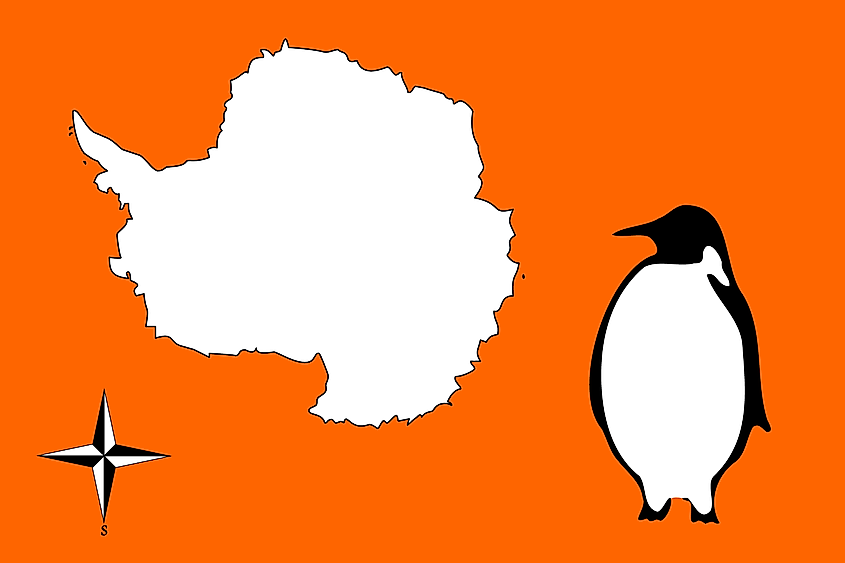
Flag for Antarctica proposed by Joanne Cooper and Stefan Tucker.
Another creative proposal came from Joanne Cooper and Stefan Tucker, who designed a flag featuring an orange field—a nod to the continent’s striking sunsets and its association with scientific research equipment often colored for high visibility. On this background appears a white outline of Antarctica, accompanied by a stylized compass pointing south in the lower-left corner and the silhouette of a penguin on the right. The compass symbolizes direction and exploration, while the penguin—one of Antarctica’s most recognizable species—represents the continent’s unique wildlife and fragile ecosystem.
Although never formally adopted, Cooper and Tucker’s flag stands out for merging scientific symbolism with natural imagery, reflecting both the spirit of exploration and the commitment to protect Antarctica’s pristine environment.
Graham Bartram's proposal
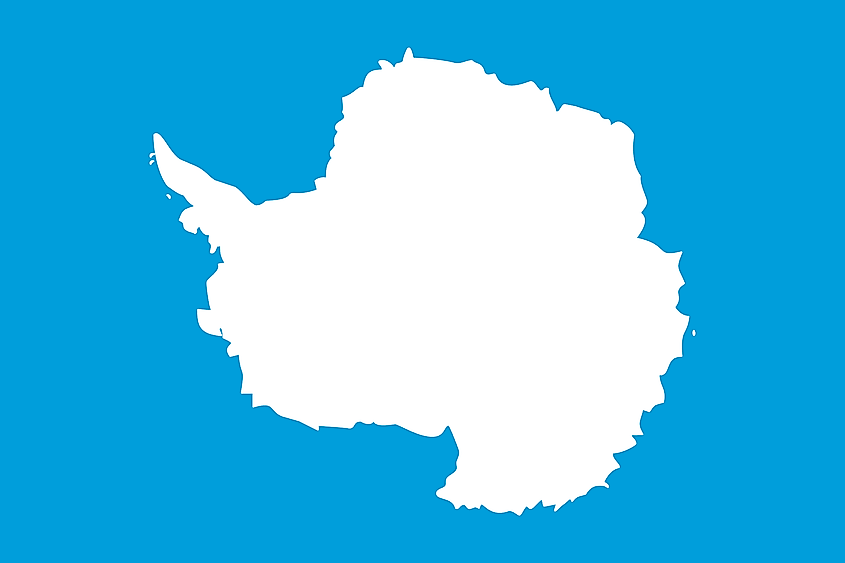
Although Antarctica has no officially recognized flag, one of the most widely accepted design is one created in 1996 by British vexillologist Graham Bartram. The flag features a white silhouette of the continent centered on a cobalt-blue field with a 2:3 ratio—a design inspired by the United Nations flag. The blue represents the surrounding Southern Ocean and the spirit of international cooperation, while the white map symbolizes the continent’s ice-covered surface and political neutrality.
Bartram’s flag has since been adopted informally at many research bases and used by scientific expeditions and educational institutions around the world as a de facto emblem of the continent.
Dave Hamilton’s Proposal
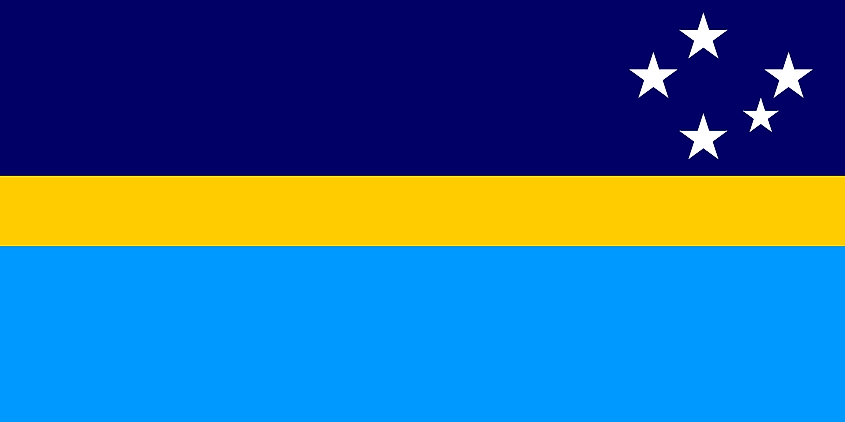
Designer Dave Hamilton proposed a flag composed of three horizontal stripes: a dark blue band at the top, a thin yellow stripe through the center, and a light blue band at the bottom. On the fly side of the upper dark-blue field, five white five-pointed stars form the pattern of the Southern Cross constellation—a familiar symbol of the southern skies.
According to Hamilton, each color represents an essential element of the Antarctic environment: the light blue stands for sea ice and glaciers, the yellow for the aurora australis, and the dark blue for the night sky. The design captures both the beauty and isolation of the southern continent while emphasizing its place beneath the celestial markers that guide explorers and scientists alike.
Olivier Leroi’s Proposal

Flag proposal for Antarctica by Oliver Leroi
French artist Olivier Leroi approached the idea of an Antarctic flag from a more symbolic and ecological perspective. His design features four vertical stripes—black, off-white, orange, and gray—arranged in proportions that mirror the plumage of the emperor penguin, one of the continent’s most iconic species. Rather than depicting Antarctica’s map or geographic elements, Leroi chose to represent the living essence of the continent itself through color and texture. The penguin-inspired palette evokes the delicate balance of life in an otherwise inhospitable environment and highlights the biological identity of Antarctica as much as its geographic one.
Although never officially adopted, Leroi’s minimalist design stands out for linking symbolism to wildlife, offering a subtle reminder that the continent’s truest emblem may not be its ice or treaties, but the species that endure within them.
The True South Flag
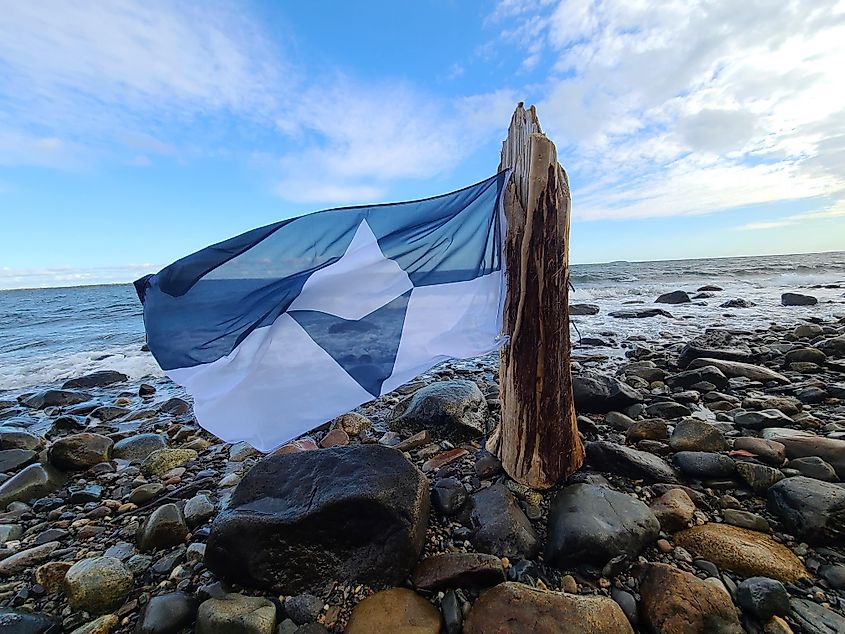
The True South flag, created in 2018 by American designer Evan Townsend, has emerged as the most contemporary and widely recognized emblem of Antarctica. Its horizontal stripes of navy and white represent the long polar days and nights that define life at the continent’s extreme latitude. At the center, a white triangular peak rises from a field of blue and white, echoing the icebergs, mountains, and pressure ridges that dominate the Antarctic landscape.
The dark shadow beneath the peak forms a compass arrow pointing south, honoring the continent’s enduring role in human exploration. Together, the two central shapes create a diamond motif, symbolizing the hope that Antarctica will remain a place of peace, discovery, and international cooperation for generations to come. Adopted by numerous research teams, expeditions, and even Antarctic bases, the True South flag has become a powerful unifying symbol for a land without nations.

